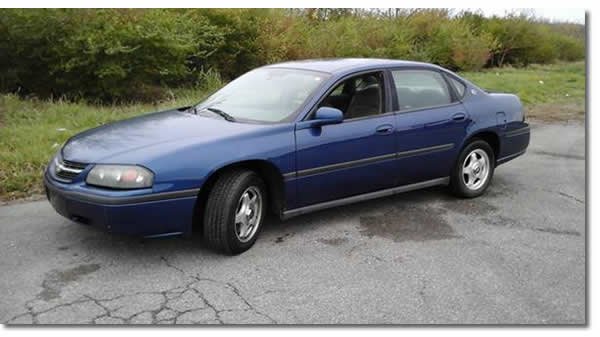2004 Chevy Impala – 3.8L — A few months ago the car began overheating anytime it sat idle at a series of traffic lights, a drive-thru, construction area, etc. My AC and radiator fans both stopped working at the same time. I checked fuses, relays, grounds and made sure I had power to the motors. Can’t pin down the cause. Shortly after, as a precaution, I flushed the radiator but only about half the fluid drained. I thought maybe I was low to begin with but when I filled with 50/50 I could only add a gallon (when the car is supposed to take just over 3 gallons). I drained again thinking maybe I didn’t drain the coolant completely but same thing — a gallon came out and a gallon went in. But I know there’s coolant in the block. When you remove the thermostat and look down the hose toward the engine, it is totally full and overflowing. Seems like the coolant is locked in the block and won’t circulate out to drain. I’ve opened the bleeder valves, removed upper and lower hoses, rant the car with the lower radiator hose removed… Nothing I seem to do works… The car is presenting code P0128 which points to a bad thermostat (I replaced it), a bad coolant temp. sensor (I replaced it), or a wiring issue. But I think there issues are unrelated. PLEASE HELP!!! Can you provide any insight on what may be causing these issues?
First you stated you have power and ground going tot he fan motors. If they are not working with power and ground they are bad and need to be replaced. Second, draining and flushing are two different things. If you feel there is a restriction not allowing coolant to flow you can put a hose at the fill neck and open the drain or remove lower hose and flush the system. A common cause for restriction would be the water pump fan blades coming apart. Although I do not think this is the issue, it is possible.
Most cases when a engine starts to overheat it is from lack of fan moving or low on coolant. If the engine is/was low on coolant the first thing would be to find out why. Find the leak and repair it. The cooling system needs to be able to build pressure and if there is a leak present it becomes more difficult to do so. And the thermostat will not be noticed as functioning properly.
How to find a Coolant Leak
The first thing to do would be to place a piece of cardboard under the vehicle to help assist in locating the leak/s. Next top off the coolant level. Then attach a coolant pressure tester and build pressure.
Then give it a few and watch to see if the tester is able to hold pressure of if it leaks down fast. A fast leak down would indicate a large leak and should be easy to locate. A slow bleed down of pressure would indicate a smaller leak and may be more difficult to locate. That is where the cardboard comes in handy to help give direction on where to look.
COOLANT DRAIN, FLUSH & REFILL
Warning: To avoid being burned, do not remove the radiator cap or surge tank cap while the engine is hot. The cooling system will release scalding fluid and steam under pressure if radiator cap or surge tank cap is removed while the engine and radiator are still hot.
Draining the cooling system with the pressure cap installed will syphon the coolant from the overflow tank.
- Remove coolant pressure cap.
- Place a drain pan under drain cock.
- Open radiator drain cock.
- Drain cooling system.
- If a complete engine block drain is required, remove coolant drain plugs from engine block.
- Inspect coolant.
- Flush cooling system with clean, drinkable water.
- Close radiator drain cock.
- If a complete engine block drain was required, install coolant drain plugs to engine block.
- Slowly fill cooling system with a 50/50 coolant mixture until coolant level is visible and stable.
- Install pressure cap loosely (threaded on about one turn).
- Start engine and raise engine speed to 2500 RPM and hold it there for 40 seconds, then shut engine off.
- Remove pressure cap and fill coolant system until level is visible and stable.
- Install pressure cap loosely (threaded on about one turn).
- Start engine and raise engine speed to 2500 RPM and hold it there for 30 seconds, then shut engine off.
- Remove pressure cap and fill coolant system until level is visible and stable.
- Install pressure cap loosely (threaded on about one turn).
- Start engine and raise engine speed to 2500 RPM and hold it there for 20 seconds, then shut engine off.
- Remove pressure cap and fill coolant system until level is visible and stable.
- Install pressure cap, fully threaded on.
- Fill coolant recovery bottle to indicator line, then add 13.5 ounces more.
- Start engine and run it above 2500 RPM until it is hot enough to open thermostat, this will allow trapped air to be purged from engine.
- Complete a series of three, 4 second duration idles with 4 second duration 3000 RPM cycles.
- Turn engine off and allow it to cool down to room temperature.
- Fill coolant recovery bottle to the indicator line.
- Inspect concentration of engine coolant with J 26568 tester or equivalent(shown below).
- Rinse away any excess coolant from engine and engine compartment.
